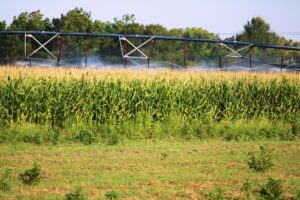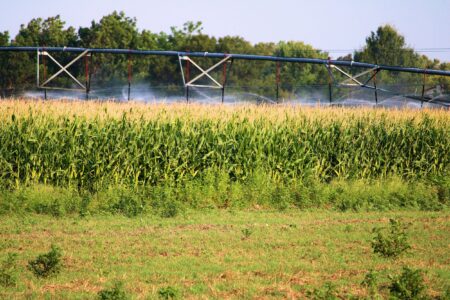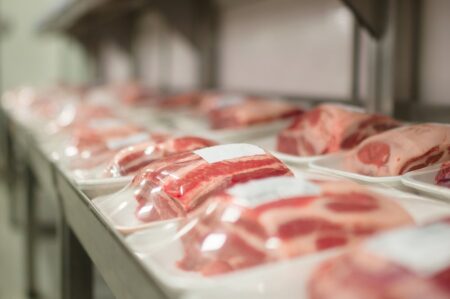By Cami Koons
The U.S. Environmental Protection Agency has withdrawn a January 2024 proposed rule that would have reduced the discharge of nutrients and pollutants from meat packing plants and slaughterhouses.
The agency said it chose to withdraw the rules in an effort to prioritize the nation’s food supply and to keep food prices down.
The proposed rules would have revised effluent limitations guidelines and standards, or ELG,s for the meat and poultry products industry. This industry, which the agency refers to as MPP, includes facilities that slaughter, dress and pack meat and poultry products for human or animal consumption.
According to EPA, the meat and poultry product industry produces wastewater polluted with nitrogen, phosphorus, oil and grease, biochemical oxygen demand, total suspended solids and chlorides.
The EPA’s proposed rule from January 2024 said the more stringent effluent limitations would “improve water quality and protect human health and the environment.” EPA said the regulatory guidelines would cost about $232 million annually in social costs and could reduce pollutant discharges by 100 million pounds per year.
EPA said in its withdrawal statement, published in the Federal Register:
“In the EPA’s judgment, it is not appropriate to impose additional regulation on the MPP industry, given Administration priorities and policy concerns, including protecting food supply and mitigating inflationary prices for American consumers following a protracted period of high inflation from 2020 through 2024.”
Additionally, the withdrawal decision said EPA’s evaluation of the proposed rules showed it would have caused increased air pollution and solid waste that would “negatively impact the environment and public health.”
The shift also reflects, according to the rationale, the agency’s focus on nitrogen and phosphorus from non-point source polluters, rather than point-source polluters. Non-point source pollution – or pollution that cannot be traced to a singular source – makes up the majority of nitrogen and phosphorus pollution that enters U.S. waterways.
In Line With Trump Administration
In its rationale for withdrawing the proposed rule, which was published Sept. 3, 2025, EPA said it only has to revise the ELG guidelines “if appropriate” and has “broad discretion” to consider the priorities and policies of the current administration in its decisions.
“At the core of the EPA’s decision is the understanding that the MPP industry plays a critical role in the nation’s food supply chain, and meat and poultry processors have faced an unprecedented disruption in operations and costs in recent years as a result of several factors, including COVID-19 food supply and supply chain issues, inflationary pressures, and the unprecedented outbreak of avian flu and New World Screwworm,” the rationale said.
The rationale said more stringent ELGs on the meat and poultry products industry would lead to “further diversion of the industry’s resources at a critical time.” EPA explained additional limits could cause plants to close or to divert from their a goals of increasing food production and availability.
The rationale sites several executive orders from President Donald Trump, and recent actions from the U.S. Department of Agriculture that show the administration’s priorities for the industry. Closures in the industry, EPA said, could lead to meat shortages and food price increases similar to those experienced during the COVID-19 pandemic.
The EPA proposed rules would have regulated water pollution from slaughterhouses and meat packing plants with tools like screening, anaerobic treatments, chemical additions, ultraviolet lights, denitrification, hauling and more.
In its rationale for withdrawal, EPA said these methods would increase energy demand and therefore lead to increased ozone and fine particulate matter air pollution.
EPA said the regulatory options would also lead to an estimated 2.5 billion to 8.5 billion-pound increase in solid waste, like animal blood, fluids and excrements, that would have to be sent to landfills or applied to cropland.
Analysis included in the proposed rules found that the market effect from the additional pollution regulation would be “sufficiently small” and “unlikely to have a noticeable effect on producer or consumer behavior.” It also said the regulatory options would result in a “negligible increase” in required energy generation.
The proposed rules’ analysis of the regulatory options said it would not “significantly increase” the amount of wastewater treatment sludge generated by the facilities. Estimates in the rules ranged from around 380,000 to 1.2 million pounds of “sludge” annually.
Environmental Groups Say EPA Made the ‘Wrong Move’
In its proposed rules, which were filed under the Biden administration, EPA’s gathered data found that the meat and poultry product industry “discharges the highest phosphorus levels and second highest nitrogen levels of all industrial categories” or point source pollution.
The nutrients, and other pollutants EPA identified as common in the industry, can impact stream health and biodiversity, impact human health and increase drinking water treatment costs. Health risks associated with consuming water high in these pollutants, according to EPA, include infant methemoglobinemia, or blue baby syndrome, colorectal cancer, thyroid disease, neural tube defects and gastrointestinal illness.
In its environmental impact analysis EPA estimated around 75% of all stream segments below direct and indirect wastewater outfalls from MPP facilities are impaired for at least one pollutant found in MPP wastewater.
The more stringent guidelines, the proposed rules said, would improve human health outcomes, stream ecology and recreation, drinking water treatment costs and fishing yields, among other things.
The proposed rules were submitted in early 2024 and received thousands of public comments through March 2024, before the current EPA’s decision to withdraw the proposed rules.
Molly Armus, a program manager with the environmental group Friends of the Earth, said EPA’s decision was “a direct contradiction” to the Trump administration’s Make America Healthy Again directive.
“For decades, slaughterhouses have dumped toxic waste into our rivers, leaving rural communities to pick up the tab,” Armus said in a statement. “By allowing this pollution to continue unchecked, Trump is once again putting industry profits over clean water and public health.”
Locally, Michael Schmidt, the general counsel for Iowa Environmental Council, said slaughterhouses and packing plants are some of the largest dischargers of nitrate in Iowa.
Schmidt said even when the industry is regulated, “they don’t always comply with their limits” and referenced a recent settlement from the Iowa Attorney General against a meat packing plant in northeast Iowa that violated its pollution guidelines several times.
“Rolling back EPA regulations to outdated standards from decades ago is the wrong move,” Schmidt said. “It benefits the near-monopoly international corporations controlling the meat industry, not everyday people. It will not make our water cleaner or Iowans healthier.”
Iowa Capital Dispatch is part of States Newsroom, a network of news bureaus supported by grants and a coalition of donors as a 501c(3) public charity. Iowa Capital Dispatch maintains editorial independence. Contact Editor Kathie Obradovich for questions: [email protected]. Follow Iowa Capital Dispatch on Facebook and Twitter.


:max_bytes(150000):strip_icc()/FomesafenfieldviewZimmerPurdue-f4384b810213434b973ed4ad75f83672.jpeg)
:max_bytes(150000):strip_icc()/Updated3BigThings-3-soybean-harvest-yellow-1-13b4e68e77bc41d8bd69b3b910ff5300.jpeg)



:max_bytes(150000):strip_icc()/raccoon-river-2048x1536-a192e1d2e67a4ee4a086be78cfe36471.jpg)

:max_bytes(150000):strip_icc()/cerealryecovercropsUSDA-b131fd0b2c584da7a22485faa6f182c6.jpg)

:max_bytes(150000):strip_icc()/100441307_dairy_cow-2b8693c4806c45a1aa0e89b45bf0ab00.jpg)